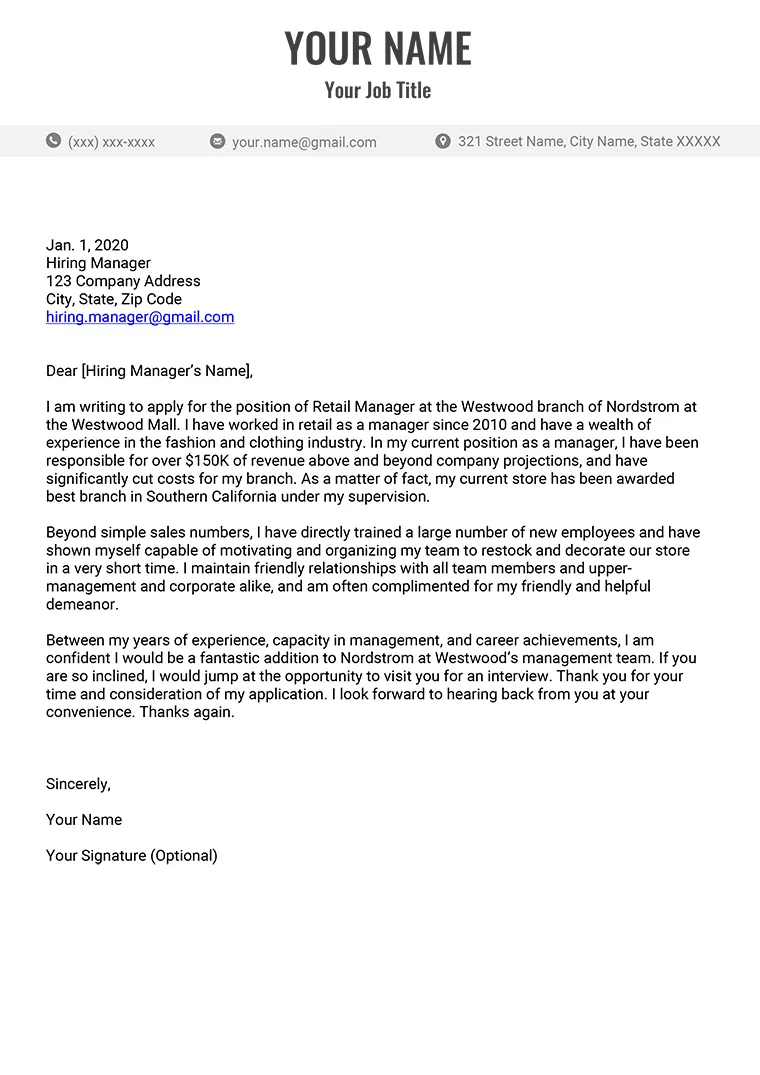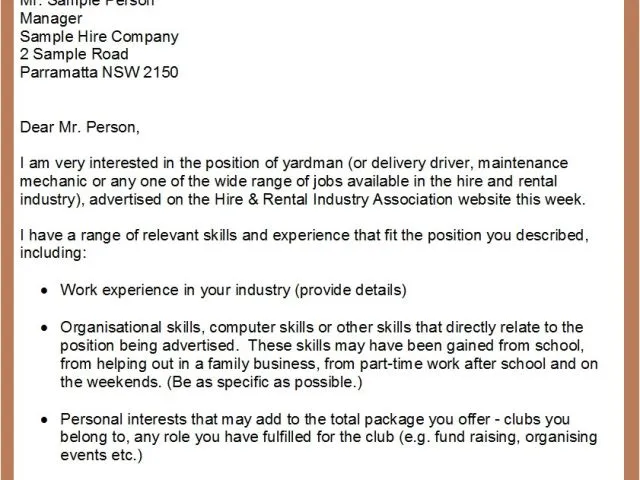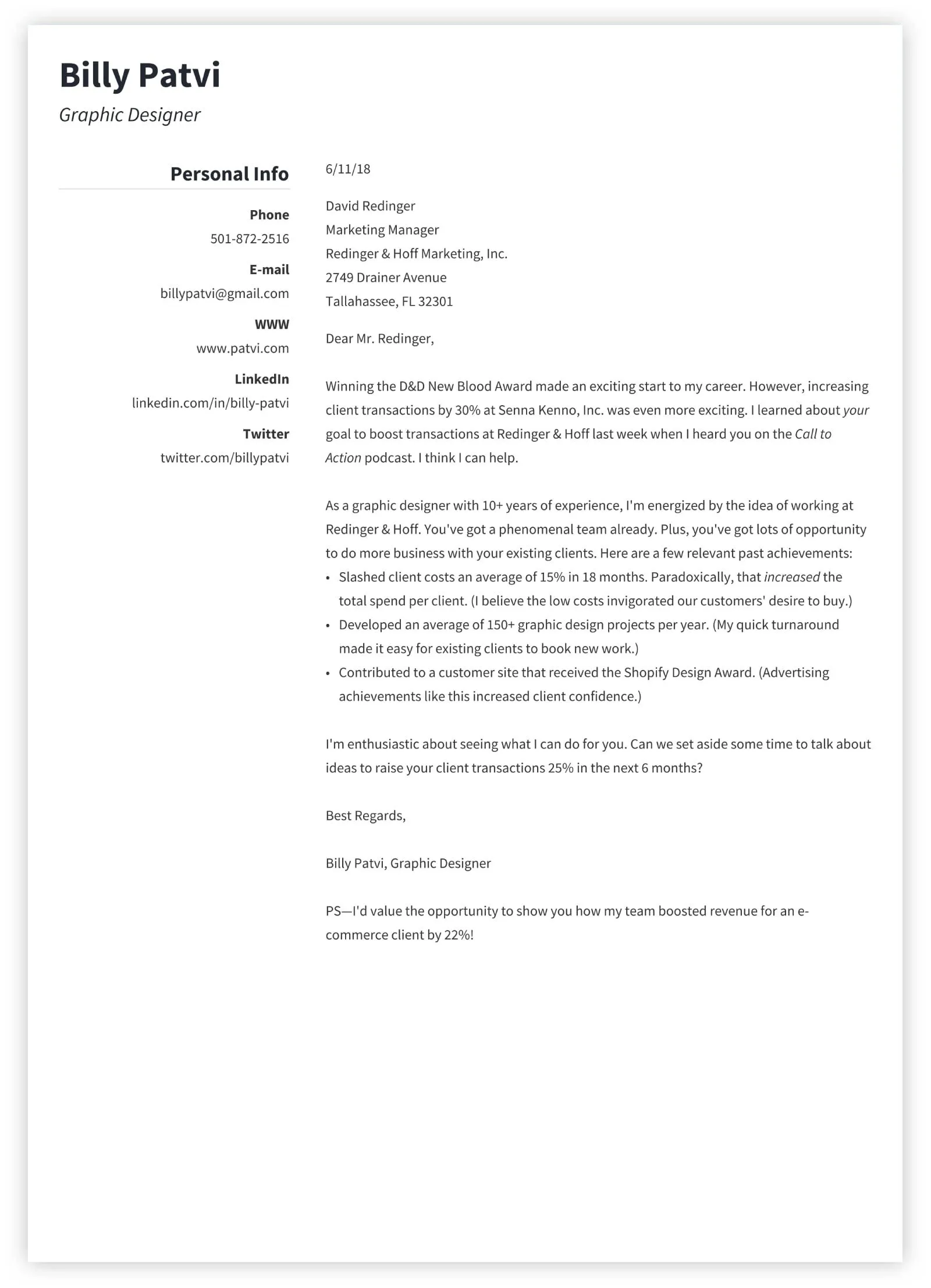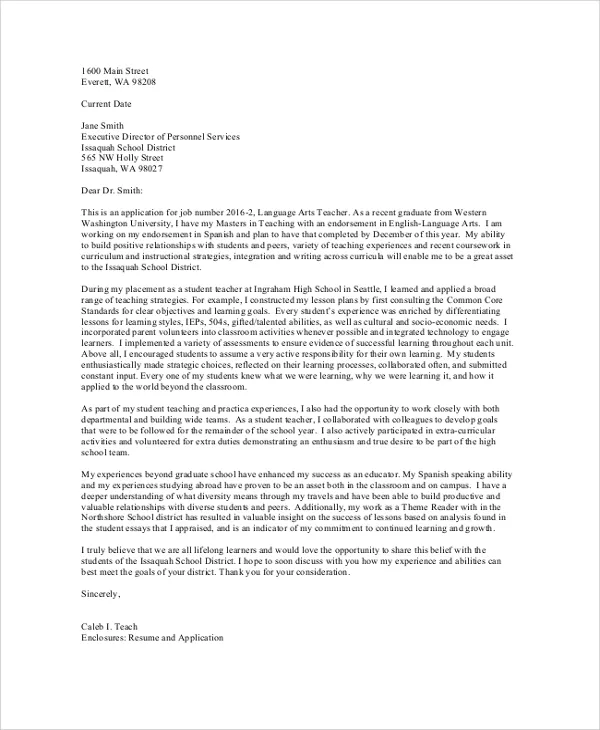What is a Cover Letter Job Application?
A cover letter is a crucial document that accompanies your resume when applying for a job. It serves as an introduction, providing potential employers with a snapshot of your skills, experiences, and qualifications. Unlike a resume, which offers a factual overview of your career history, a cover letter gives you the opportunity to express your personality, demonstrate your enthusiasm for the position, and highlight why you are the ideal candidate. Writing a compelling cover letter is an art, one that can significantly increase your chances of landing an interview. It’s your chance to make a lasting first impression and set yourself apart from other applicants. A well-crafted cover letter is not merely a formality; it’s a powerful tool in your job search arsenal.
Purpose of a Cover Letter
The primary purpose of a cover letter is to persuade the hiring manager to read your resume and consider you for the job. It’s a tool to showcase your understanding of the company and the specific role, and to explain why your background aligns with their needs. A cover letter allows you to elaborate on experiences and skills that might not be fully detailed in your resume. It also provides context, explaining how your past experiences have prepared you for this new opportunity. The cover letter isn’t just about listing your qualifications; it’s about connecting with the reader on a professional level, demonstrating that you understand the company’s needs and that you are genuinely interested in contributing to its success. The purpose extends beyond simply getting an interview, it aims to establish a positive first impression.
Key Elements for a Cover Letter

A well-structured cover letter includes several key elements that work together to present a comprehensive and compelling picture of you as a candidate. These elements include your contact information and the date, a professional greeting, an engaging opening paragraph, a section that highlights your relevant skills and experience, a closing paragraph expressing gratitude and a call to action. Each component plays a vital role in telling your story. Understanding the importance of these elements and how they fit together helps you craft a letter that is both informative and persuasive, making the best possible case for why you are the perfect fit for the role. Attention to these elements will significantly improve the overall effectiveness of your cover letter.
Contact Information and Date
At the top of your cover letter, include your contact information, such as your name, phone number, email address, and possibly a LinkedIn profile URL. This ensures that the hiring manager can easily reach you. Directly below your contact information, add the date. This helps to create a professional and organized appearance. Ensure your contact information is accurate and up-to-date. It may seem trivial, but the accuracy of this information is essential because it determines the ease with which a potential employer can contact you. This section is about presenting yourself professionally from the start.
Professional Greeting
The greeting sets the tone for the rest of your cover letter. Aim for a professional greeting, such as “Dear Mr./Ms./Mx. [Last Name],” when possible. If you can’t find the hiring manager’s name, “Dear Hiring Manager” or “Dear [Department Name] Team” are acceptable alternatives. Avoid generic greetings like “To Whom It May Concern,” which can make your letter appear impersonal. Taking the time to research the correct contact person shows that you’ve done your homework and that you care enough to make a personal connection. This small detail can give your cover letter a head start and show you are serious about this job opportunity. Always double-check the spelling of the name to ensure you get it right.
Opening Paragraph Grab Attention

Your opening paragraph is your first chance to grab the reader’s attention. It should be concise and engaging, clearly stating the position you are applying for and how you found the job posting. Immediately highlight what makes you a strong candidate, such as a key skill or experience relevant to the role. Avoid generic opening lines. Instead, try to create an opening that reflects your understanding of the company’s needs and explains why you are a good fit. This is your initial chance to demonstrate your enthusiasm and set a positive tone for the rest of your letter. The opening must show the employer that reading the rest of your letter is worthwhile.
Highlighting Your Skills and Experience
This section is the core of your cover letter, where you connect your skills and experiences to the job requirements. Use this opportunity to discuss your relevant accomplishments, quantifying them whenever possible. Provide specific examples that demonstrate how you have used your skills in previous roles. Avoid simply repeating what’s on your resume. Instead, use your cover letter to expand on key experiences and offer additional context. Show the hiring manager how your previous experiences align with the job responsibilities. It’s important to highlight the skills and experiences most relevant to the role, ensuring you show the employer that you’re a strong fit and ready to contribute to their team.
Matching Skills to Job Requirements
Carefully review the job description and identify the key skills and requirements the employer is seeking. Then, in your cover letter, explicitly state how your skills and experiences align with these requirements. Use the same keywords and phrases from the job description, but be sure to do so naturally and authentically. By directly addressing the employer’s needs, you demonstrate that you understand what the role entails and that you can meet the expectations. Show that you’re not just qualified but also the right fit for the company. This targeted approach increases your chances of being considered for the position.
Quantifying Achievements

Whenever possible, quantify your achievements with numbers and data. This makes your accomplishments more tangible and impactful. For example, instead of saying, “Improved customer satisfaction,” say, “Increased customer satisfaction scores by 15% within six months.” Using specific metrics demonstrates the positive impact you’ve made in previous roles, showcasing your value to the employer. Quantifying your achievements adds credibility to your claims and gives the hiring manager a clear understanding of your capabilities. This helps them assess the value you can bring to their team. Be precise and provide context when giving the figures to provide a clearer picture.
Demonstrating Enthusiasm and Interest
Throughout your cover letter, clearly express your enthusiasm for the role and the company. Explain why you are interested in this specific opportunity and what you admire about the organization. Show that you have researched the company and understand its mission, values, and goals. This demonstrates that you’re genuinely interested in the position, not just sending out a generic application. By showing genuine interest, you make a more memorable impression and set yourself apart from other candidates. Your enthusiasm helps to show the employer that you want the job, and that you are not just qualified but excited to contribute to their team.
Closing the Cover Letter
The closing of your cover letter should be concise and professional, summarizing your key qualifications and reiterating your interest in the position. Thank the hiring manager for their time and consideration. A strong closing paragraph is your last chance to make a positive impression and leave the reader with a clear understanding of your value. By summarizing your qualifications and expressing your enthusiasm, you reinforce the key messages of your letter. This helps to make sure you leave a lasting impression and reinforce the reason they should invite you for an interview.
Expressing Gratitude

Always thank the hiring manager for their time and consideration. Expressing gratitude shows respect and professionalism, leaving a positive impression. This simple act reflects your appreciation for the opportunity and highlights your understanding of professional etiquette. It’s important to thank the hiring manager for considering your application, regardless of the outcome, as a show of respect. Your thank you should sound sincere. This shows your maturity and good attitude.
Call to Action
End your cover letter with a clear call to action. Indicate your interest in an interview and how you can be reached. Let the hiring manager know that you are available and eager to discuss your qualifications further. A clear call to action gives the reader the next step. Your call to action should be direct and specific, encouraging them to take the next step. This final step can boost your chances of moving forward in the hiring process.
Proofreading and Formatting
Before submitting your cover letter, carefully proofread it for any grammatical errors, spelling mistakes, or typos. A polished and error-free letter reflects professionalism and attention to detail. Pay close attention to sentence structure, word choice, and punctuation. Reading your cover letter out loud can help you catch any mistakes you might miss when reading silently. Consider asking a friend or family member to review it for you. This attention to detail demonstrates your commitment to excellence and increases your chances of making a positive impression.
Formatting the Cover Letter for Readability

Format your cover letter for readability. Use a professional font like Times New Roman, Arial, or Calibri, and ensure your font size is easy to read (typically 11 or 12 points). Use a clear layout with consistent margins and spacing. Keep your paragraphs concise and easy to digest. A well-formatted cover letter makes it easy for the hiring manager to read and absorb the information. The visual presentation is just as important as the content, because it can help your cover letter stand out. A clean and well-formatted cover letter will increase the impact of the message.
Common Mistakes to Avoid
There are common mistakes that job seekers make in their cover letters. By being aware of these errors, you can make sure your cover letter stands out for the right reasons. Some of the biggest errors are grammar, spelling and length. The key is to be careful and tailor your cover letter to match the job.
Grammar and Spelling Errors
Grammar and spelling errors can undermine your credibility. They show a lack of attention to detail and can give the impression that you’re not serious about the job. Always proofread your cover letter carefully and use a grammar and spell checker. Consider having a friend or family member review it. An error-free cover letter will leave a positive impression on the reader.
Generic Cover Letters
Avoid sending generic cover letters that could be used for any job. Tailor each cover letter to the specific position and company. Generic letters show a lack of interest and preparation. Customize your cover letter by highlighting relevant skills, experiences, and your understanding of the company’s needs. This customization will demonstrate your enthusiasm for the specific opportunity and make you stand out.
Length of the Cover Letter
Keep your cover letter concise and to the point. Aim for one page, unless otherwise specified in the job posting. Hiring managers often review numerous applications, so they appreciate a cover letter that is easy to read and quickly conveys the essential information. Don’t include too much unnecessary detail, and make sure every sentence adds value to your application. Being concise ensures your key points are noticed. Length is also important to consider. A cover letter that is too long or too short may make a negative impression.
Tailoring Your Cover Letter
Customizing your cover letter to each job is vital. This shows the hiring manager that you are genuinely interested in the specific role and that you have taken the time to understand their needs. Tailoring also allows you to highlight the skills and experiences most relevant to the job requirements. It’s not just about including relevant keywords; it’s about demonstrating that you understand the company and how your skills align with its goals. Taking the time to tailor your cover letter will pay off by demonstrating your commitment to the role.
Researching the Company
Before writing your cover letter, research the company thoroughly. Visit their website, read news articles, and explore their social media presence. Understanding the company’s mission, values, and recent projects will enable you to tailor your letter to show how your skills and experiences align with their specific needs. This shows your genuine interest and gives you insights. Your research is critical because it can help you show the hiring manager that you’re the right fit.
Using Keywords from the Job Description
Carefully review the job description and identify the keywords and phrases used to describe the ideal candidate. Incorporate these keywords into your cover letter, but do so naturally and authentically. This practice shows that you understand the role and have the skills and qualifications the employer is seeking. However, avoid keyword stuffing. The key is to integrate them seamlessly. Using the right keywords will get your cover letter noticed by applicant tracking systems, and it will also show the hiring manager that you understand the requirements.
Cover Letter Examples
Reviewing cover letter examples can provide inspiration and guidance for your own writing. However, remember to tailor any example to your own experiences and the specific job. By studying different examples, you can understand various approaches and formats, and it can give you ideas of what to include. Examples can help you create your own unique cover letter, providing a framework for your own writing.
Cover Letter for Entry-Level Positions
For entry-level positions, focus on highlighting your education, internships, volunteer experiences, and any relevant coursework or projects. Since you may lack extensive professional experience, emphasize your transferable skills, such as communication, teamwork, and problem-solving. Demonstrate your enthusiasm for the field and your willingness to learn. Emphasize your skills and academic background and explain your drive to make a real difference and to add value. Focus on showing that you’re a fast learner and are eager to gain professional experience. Show that you’re ready to begin your professional journey.
Cover Letter for Experienced Professionals
For experienced professionals, focus on your achievements and accomplishments. Quantify your results whenever possible. Highlight your most relevant skills and experiences. Demonstrate how your past experiences have prepared you for the role and how you can contribute to the company’s success. Use your cover letter to showcase your expertise and demonstrate your value. Highlight your ability to take on this new role. Frame your experience and show how you’re prepared to take on your new role and how you can take your new employer forward.
